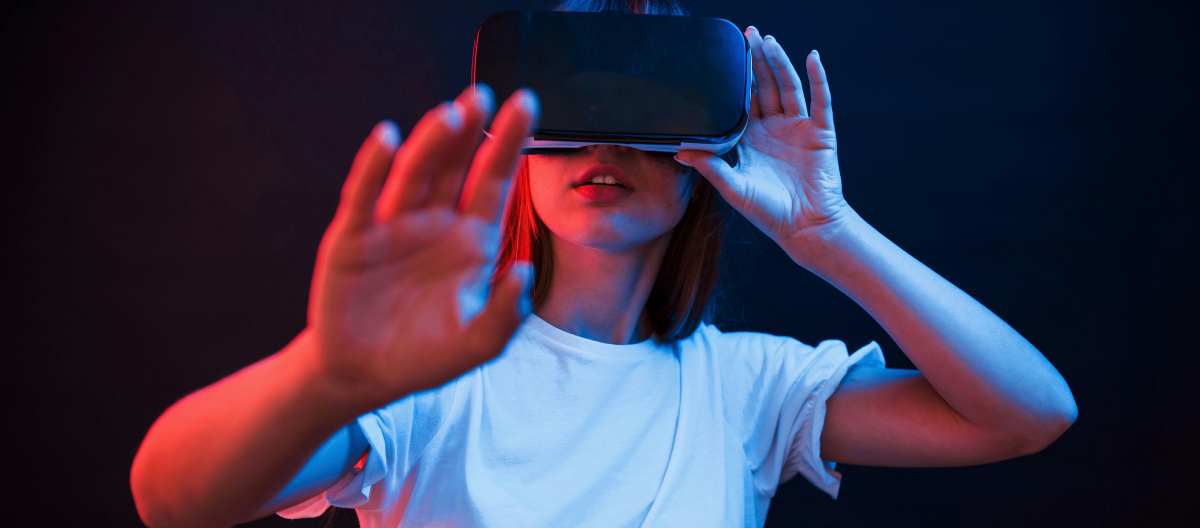Virtual fashion shows have emerged as a dynamic and innovative solution in the fashion industry, especially after the global pandemic limited in-person gatherings. These digital experiences have revolutionized the way designers present their collections, allowing for broader access, creative experimentation, and a more sustainable approach to fashion events. Here’s an exploration of virtual fashion shows, how they work, and their growing impact on the industry.
How Virtual Fashion Shows Work
Virtual fashion shows are essentially digital events where designers showcase their latest collections through online platforms. Unlike traditional runway shows, these digital presentations can be streamed live or pre-recorded, offering flexibility and creativity in production.
Key Components:
- Live Streams: Many fashion shows are now streamed live on platforms like YouTube, Instagram, or the brand’s website, giving real-time access to a global audience.
- Pre-Recorded Videos: Some designers opt for pre-recorded presentations, blending fashion with cinematic storytelling and innovative visual effects.
- Augmented Reality (AR) and Virtual Reality (VR): Advanced technology like AR and VR allows audiences to virtually “attend” shows, even creating immersive 3D environments where viewers can interact with the collection.
- Digital Avatars: Some shows feature digital models or avatars, where the entire presentation is computer-generated, offering a futuristic and boundary-pushing take on fashion.
Benefits of Virtual Fashion Shows
Virtual fashion shows have opened up new possibilities in the industry, from democratizing access to fashion events to promoting sustainability.
Broader Accessibility:
- Global Reach: Virtual shows are accessible to anyone with an internet connection, breaking down the exclusivity of in-person events. This allows fans, influencers, and buyers from around the world to participate without geographic limitations.
- Inclusivity: These shows also offer an inclusive experience, allowing people who may not have been able to attend physical shows due to financial or mobility constraints to join in on the excitement.
Creative Freedom:
- Cinematic Storytelling: Designers can experiment with creative formats, blending fashion with film, music, and digital art. This allows for more intricate storytelling, from moody, artistic presentations to dynamic, high-energy visuals.
- No Time Constraints: Virtual shows aren’t bound by a single time slot. Designers can release their collections on their own schedules, and audiences can revisit the shows whenever they like.
Sustainability:
- Reduced Carbon Footprint: Virtual shows eliminate the need for physical travel, reducing carbon emissions from flights, accommodations, and transportation. This aligns with the fashion industry’s push toward more sustainable practices.
- Less Waste: Without the need for physical sets, lighting rigs, and printed invitations, virtual shows help reduce waste, contributing to a greener future for fashion.
Cost Efficiency:
- Reduced Costs: Hosting a virtual show is often more cost-effective than producing a large-scale in-person event. It allows designers, especially emerging ones, to present their collections without the hefty costs associated with traditional fashion weeks.
Challenges of Virtual Fashion Shows
Despite the benefits, virtual fashion shows come with their own set of challenges.
Lack of Physical Interaction:
- Tactile Experience: Fashion is a highly tactile industry, where touching fabrics and seeing clothes in motion is essential. Virtual shows can’t replicate the feeling of touching a garment or seeing how it moves in real life.
- Networking Opportunities: Traditional fashion shows are major networking hubs for designers, buyers, and influencers. The virtual format makes it harder to establish face-to-face connections and form relationships.
Digital Fatigue:
- Over-saturation: With the surge of digital content, viewers may experience “screen fatigue,” making it harder to capture their full attention in virtual fashion shows.
- Technical Limitations: Not everyone has access to high-speed internet or VR/AR technology, potentially limiting the viewing experience for some audiences.
Notable Virtual Fashion Shows
Several fashion houses and designers have successfully embraced the virtual format, with many creating memorable digital experiences.
Balenciaga’s Fall 2021 Collection:
Balenciaga combined gaming and fashion by presenting their collection through a custom video game called Afterworld: The Age of Tomorrow. This innovative approach immersed users in a futuristic world where they could explore different environments while interacting with models wearing the latest designs.
Gucci’s Epilogue Collection:
Gucci took a behind-the-scenes approach for their digital show, allowing viewers to experience the creative process. The virtual event live-streamed the collection being photographed for a campaign, offering an intimate look into the production of a fashion show.
Hanifa’s 3D Digital Runway:
Emerging designer Anifa Mvuemba made waves with her fully digital runway show featuring 3D renderings of her collection. The models were invisible, with only the clothes moving down the runway, offering a futuristic and visually stunning take on fashion.
The Future of Virtual Fashion Shows
As technology continues to evolve, so will virtual fashion shows. Several trends are likely to shape the future of digital fashion presentations.
Increased Use of AR and VR:
Augmented reality and virtual reality will continue to play a significant role in enhancing the virtual fashion experience. With AR, consumers could soon “try on” outfits from a virtual show in real-time, while VR could create entirely immersive fashion worlds where viewers can interact with digital models and clothing.
Hybrid Fashion Weeks:
As in-person events make a comeback, many fashion weeks are expected to adopt a hybrid model, combining physical and digital shows. This format allows for the exclusivity of in-person attendance while maintaining the global reach of virtual shows.
Customizable Viewing Experiences:
The future of virtual fashion could also involve more personalized experiences. Viewers may be able to choose how they interact with a show, whether it’s watching from different camera angles, controlling the pace of the presentation, or even customizing the appearance of digital models.
Sustainable Focus:
Sustainability will remain at the forefront, with virtual fashion shows leading the way in reducing the environmental impact of fashion events. Expect to see more brands opting for digital presentations as part of their commitment to eco-friendly practices.


